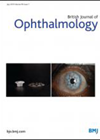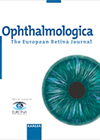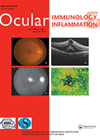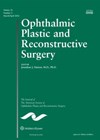
Journal Reviews archive for June 2016
Intravitreal bevacizumab vs. ranibizumab in the treatment of macular oedema due to BRVO
This is a randomised, prospective, non-inferiority trial of 75 patients with macular oedema due to a branch retinal vein occlusion (BRVO) who received intravitreal injections of ranibizumab or bevacizumab after 1:1 block randomisation. This study is to measure the difference...
Retinal pigment epithelium tears
In this paper the authors review the current knowledge of retinal pigment epithelium (RPE) tears. Although rare these can cause loss of visual acuity. They can occur spontaneously in pigment epithelial detachment (PED) due to occult choroidal neovascularisation (CNV), retinal...
Froben for anterior scleritis
Flurbiprofen (Froben) is one of the nonselective cyclooxygenase (COX) inhibitors blocking both COX-1 and COX-2 pathways. Agrawal et al. undertook a retrospective cohort study to determine the effectiveness of oral Froben in managing noninfectious, non-necrotising anterior scleritis. One hundred and...
Anterior segment OCT imaging in cases of episcleritis and scleritis
The purpose of this study was to determine whether it is feasible to obtain good-quality images with anterior segment OCT (AS-OCT) in patients with episcleral or scleral inflammation located anterior to the equator, and whether this technique is able to...
Intravitreal triamcinolone for uveitic macular oedema
This paper from South Korea reports on a prospective, double blind, randomised clinical study designed to evaluate the additional benefit of intravitreal triamcinolone (TA) administration for noninfectious uveitic macular oedema as an adjunct therapy to systemic anti-inflammatory treatment. Patients were...
Ozurdex use in noninfectious uveitis
Burkholder et al. reported the practice patterns of 45 respondents of approximately 176 surveyed members of the American Uveitis Society regarding the use of the Ozurdex implant. Most respondents performed the injection in either a procedure (41.0%) or clinic (23.1%)...
Bleb-related changes in upper lid position
This is a review of five patients with upper lid ptosis or lid retraction secondary to large filtering blebs post-trabeculectomy. The authors review each case and apply a model to analyse the separate forces acting on the upper lid to...
Proprioception and ptosis
This is a small prospective study investigating the effect of proprioceptive factors on upper lid height. Eight unilaterally anophthalmic patients with ocular prostheses and normal lid heights had standardised photographic measurements taken of their eyelid and brow positions. Three sets...








